Phosphatase and tensin homolog (PTEN)-induced putative kinase 1 (PINK1)-dependent ubiquitination of endogenous Parkin attenuates mitophagy: study in human primary fibroblasts and induced pluripotent stem cell-derived neurons
- PMID: 23212910
- PMCID: PMC3554895
- DOI: 10.1074/jbc.M112.391680
Phosphatase and tensin homolog (PTEN)-induced putative kinase 1 (PINK1)-dependent ubiquitination of endogenous Parkin attenuates mitophagy: study in human primary fibroblasts and induced pluripotent stem cell-derived neurons
Abstract
Mutations in the E3 ubiquitin ligase Parkin and the mitochondrial PTEN-induced putative kinase 1 (PINK1) have been identified to cause autosomal recessive forms of familial Parkinson disease, with PINK1 functioning upstream of Parkin in a pathway important for the maintenance of mitochondrial function and morphology. Upon the loss of the mitochondrial membrane potential, Parkin translocates to mitochondria in a PINK1-dependent manner to ubiquitinate mitochondrial proteins. Parkin-mediated polyubiquitination of outer mitochondrial membrane (OMM) proteins recruits the ubiquitin- and LC3-binding adaptor protein p62 to mitochondria and induces mitophagy. Although previous studies examined mitophagy in established cell lines through overexpression approaches, there is an imperative to study the role of endogenous Parkin and PINK1 in human-derived and biologically relevant cell models. Here, we demonstrate in human primary fibroblasts and induced pluripotent stem-derived neurons from controls and PINK1 mutation carriers that endogenous levels of Parkin are not sufficient to initiate mitophagy upon loss of the mitochondrial membrane potential, caused by its (self-)ubiquitination, followed by degradation via the ubiquitin proteasome system. Next, we showed differential PINK1-dependent, Parkin-mediated ubiquitination of OMM proteins, which is Parkin dose-dependent and affects primarily OMM proteins of higher molecular mass. In contrast to the situation fibroblasts, we did not detect mitophagy in induced pluripotent stem-derived neurons even upon overexpression of Parkin. Taken together, our data demonstrate that mitophagy differs between human non-neuronal and neuronal cells and between "endogenous" and "Parkin-overexpressing" cellular models.
Figures
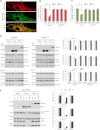
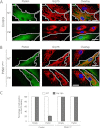
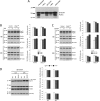


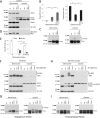

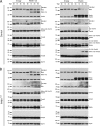
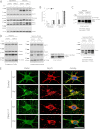

Similar articles
-
N-degron-mediated degradation and regulation of mitochondrial PINK1 kinase.Curr Genet. 2020 Aug;66(4):693-701. doi: 10.1007/s00294-020-01062-2. Epub 2020 Mar 10. Curr Genet. 2020. PMID: 32157382 Review.
-
PTEN-L is a novel protein phosphatase for ubiquitin dephosphorylation to inhibit PINK1-Parkin-mediated mitophagy.Cell Res. 2018 Aug;28(8):787-802. doi: 10.1038/s41422-018-0056-0. Epub 2018 Jun 22. Cell Res. 2018. PMID: 29934616 Free PMC article.
-
Effect of endogenous mutant and wild-type PINK1 on Parkin in fibroblasts from Parkinson disease patients.Hum Mol Genet. 2010 Aug 15;19(16):3124-37. doi: 10.1093/hmg/ddq215. Epub 2010 May 27. Hum Mol Genet. 2010. PMID: 20508036
-
Convergence of Parkin, PINK1, and α-Synuclein on Stress-induced Mitochondrial Morphological Remodeling.J Biol Chem. 2015 May 29;290(22):13862-74. doi: 10.1074/jbc.M114.634063. Epub 2015 Apr 10. J Biol Chem. 2015. PMID: 25861987 Free PMC article.
-
The Role of PTEN-L in Modulating PINK1-Parkin-Mediated Mitophagy.Neurotox Res. 2022 Aug;40(4):1103-1114. doi: 10.1007/s12640-022-00475-w. Epub 2022 Jun 14. Neurotox Res. 2022. PMID: 35699891 Review.
Cited by
-
The therapeutic effect of TBK1 in intervertebral disc degeneration via coordinating selective autophagy and autophagic functions.J Adv Res. 2020 Aug 24;30:1-13. doi: 10.1016/j.jare.2020.08.011. eCollection 2021 May. J Adv Res. 2020. PMID: 34026282 Free PMC article.
-
Parkin facilitates proteasome inhibitor-induced apoptosis via suppression of NF-κB activity in hepatocellular carcinoma.Cell Death Dis. 2019 Sep 26;10(10):719. doi: 10.1038/s41419-019-1881-x. Cell Death Dis. 2019. PMID: 31558697 Free PMC article.
-
Using induced pluripotent stem cell neuronal models to study neurodegenerative diseases.Biochim Biophys Acta Mol Basis Dis. 2020 Apr 1;1866(4):165431. doi: 10.1016/j.bbadis.2019.03.004. Epub 2019 Mar 18. Biochim Biophys Acta Mol Basis Dis. 2020. PMID: 30898538 Free PMC article. Review.
-
Targeting Mitochondrial Network Architecture in Down Syndrome and Aging.Int J Mol Sci. 2020 Apr 29;21(9):3134. doi: 10.3390/ijms21093134. Int J Mol Sci. 2020. PMID: 32365535 Free PMC article. Review.
-
Mitochondria: A Therapeutic Target for Parkinson's Disease?Int J Mol Sci. 2015 Sep 1;16(9):20704-30. doi: 10.3390/ijms160920704. Int J Mol Sci. 2015. PMID: 26340618 Free PMC article. Review.
References
-
- Langston J. W., Ballard P., Tetrud J. W., Irwin I. (1983) Chronic Parkinsonism in humans due to a product of meperidine-analog synthesis. Science 219, 979–980 - PubMed
-
- Betarbet R., Sherer T. B., MacKenzie G., Garcia-Osuna M., Panov A. V., Greenamyre J. T. (2000) Chronic systemic pesticide exposure reproduces features of Parkinson's disease. Nat. Neurosci. 3, 1301–1306 - PubMed
-
- Kitada T., Asakawa S., Hattori N., Matsumine H., Yamamura Y., Minoshima S., Yokochi M., Mizuno Y., Shimizu N. (1998) Mutations in the Parkin gene cause autosomal recessive juvenile parkinsonism. Nature 392, 605–608 - PubMed
-
- Valente E. M., Abou-Sleiman P. M., Caputo V., Muqit M. M., Harvey K., Gispert S., Ali Z., Del Turco D., Bentivoglio A. R., Healy D. G., Albanese A., Nussbaum R., González-Maldonado R., Deller T., Salvi S., Cortelli P., Gilks W. P., Latchman D. S., Harvey R. J., Dallapiccola B., Auburger G., Wood N. W. (2004) Hereditary early-onset Parkinson's disease caused by mutations in PINK1. Science 304, 1158–1160 - PubMed
-
- Clark I. E., Dodson M. W., Jiang C., Cao J. H., Huh J. R., Seol J. H., Yoo S. J., Hay B. A., Guo M. (2006) Drosophila PINK1 is required for mitochondrial function and interacts genetically with Parkin. Nature 441, 1162–1166 - PubMed
Publication types
MeSH terms
Substances
LinkOut - more resources
Full Text Sources
Other Literature Sources
Medical
Molecular Biology Databases
Research Materials

